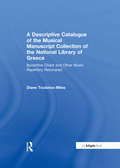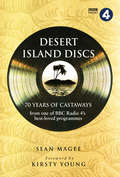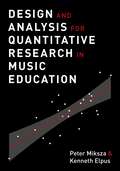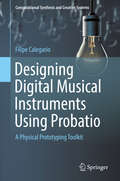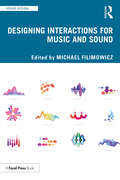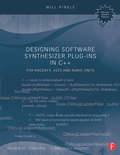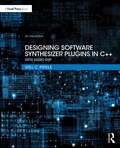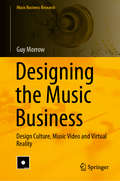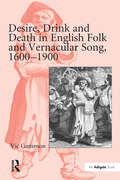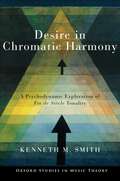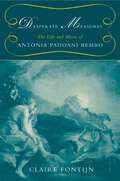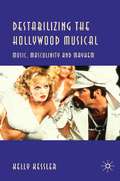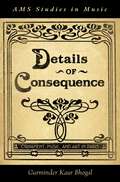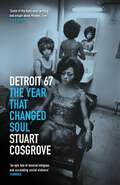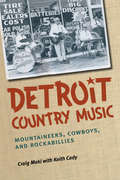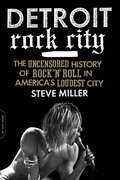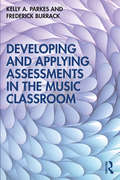- Table View
- List View
A Descriptive Catalogue of the Musical Manuscript Collection of the National Library of Greece: Byzantine Chant and Other Music Repertory Recovered
by DianeH. Touliatos-MilesThe National Library of Greece (Ethnike Bibliothike tes Ellados) is one of the richest depositories of Byzantine musical manuscripts and is surpassed by its holdings in Greece only by the multitude of manuscripts found in the monasteries of Mount Athos. In spite of being such a rich archive, the National Library has never published a catalogue of its musical manuscripts - not all of which are Byzantine or Greek. It is the purpose of this catalogue to recover or, in some instances, to present for the first time the repertory of the musical sources of the library. This project has been twelve years in the making for Professor Diane Touliatos, involving the discovery and detailed cataloguing of all 241 Western, Ancient Greek, and Byzantine music manuscripts. Not all of these are from Athens or modern Greece, but also encompass Turkey, the Balkans, Italy, Cyprus, and parts of Western Europe. This variety underlines the importance of the catalogue for identifying composers, music and performance practice of different locales. The catalogue includes a detailed listing of the contents as written in the original language as well as the titles of compositions (and/or incipits) with composers, modal signatures, other attributions and information on performance practice. Each manuscript entry includes a commentary in English indicating important highlights and its significance. There is a substantive English checklist that summarizes the contents of each manuscript for non-Greek readers. A bibliography follows containing pertinent citations where the manuscript has been used in references. There is also a glossary that defines terms for the non-specialist. Examples of some of the manuscripts will be photographically displayed. The catalogue will enlighten musicologists and Byzantinists of the rich and varied holdings of some of the most important musical manuscripts in existence, and stimulate more interest and investigation of these sources. As such, it will fill a major ga
A Descriptive Catalogue of the Musical Manuscript Collection of the National Library of Greece: Byzantine Chant and Other Music Repertory Recovered
by DianeH. Touliatos-MilesThe National Library of Greece (Ethnike Bibliothike tes Ellados) is one of the richest depositories of Byzantine musical manuscripts and is surpassed by its holdings in Greece only by the multitude of manuscripts found in the monasteries of Mount Athos. In spite of being such a rich archive, the National Library has never published a catalogue of its musical manuscripts - not all of which are Byzantine or Greek. It is the purpose of this catalogue to recover or, in some instances, to present for the first time the repertory of the musical sources of the library. This project has been twelve years in the making for Professor Diane Touliatos, involving the discovery and detailed cataloguing of all 241 Western, Ancient Greek, and Byzantine music manuscripts. Not all of these are from Athens or modern Greece, but also encompass Turkey, the Balkans, Italy, Cyprus, and parts of Western Europe. This variety underlines the importance of the catalogue for identifying composers, music and performance practice of different locales. The catalogue includes a detailed listing of the contents as written in the original language as well as the titles of compositions (and/or incipits) with composers, modal signatures, other attributions and information on performance practice. Each manuscript entry includes a commentary in English indicating important highlights and its significance. There is a substantive English checklist that summarizes the contents of each manuscript for non-Greek readers. A bibliography follows containing pertinent citations where the manuscript has been used in references. There is also a glossary that defines terms for the non-specialist. Examples of some of the manuscripts will be photographically displayed. The catalogue will enlighten musicologists and Byzantinists of the rich and varied holdings of some of the most important musical manuscripts in existence, and stimulate more interest and investigation of these sources. As such, it will fill a major ga
Desert Island Discs: 70 Years Of Castaways
by Sean Magee Kirsty Young‘For seventy years now Desert Island Discs has managed that rare feat – to be both enduring and relevant. By casting away the biggest names of the day in science, business, politics, showbiz, sport and the arts, it presents a cross-sectional snapshot of the times in which we live. As the decades have passed, the programme has kept pace; never frozen in time yet always, somehow, comfortingly the same.’ Kirsty YoungBBC Radio 4’s Desert Island Discs celebrates its seventieth birthday in 2012. Since the programme’s deviser Roy Plomley interviewed comedian Vic Oliver in January 1942, nearly 3,000 distinguished people from all walks of life have been stranded on the mythical island, accompanied by only eight records, one book and a luxury.Here the story of one of BBC Radio 4’s favourite programmes is chronicled through a special selection of castaways.Roy Plomley, inventor of the programme as well as its presenter for over forty years, quizzes the young Cliff Richard about ‘these rather frenzied movements’ the 1960s pop sensation makes on the stage. Robert Maxwell tells Plomley’s successor Michael Parkinson that ‘I will have left the world a slightly better place by having lived in it.’ Diana Mosley assures Sue Lawley that Adolf Hitler was ‘extraordinarily fascinating’ and had mesmeric blue eyes. And Johnny Vegas tugs Kirsty Young’s heart-strings with his account of a childhood so impoverished that family pets were fair game: ‘My dad had always claimed that rabbits were livestock, but we’d never eaten one before.’Desert Island Discs is much more than a radio programme. It is a unique and enduringly popular take on our lives and times – and this extensively illustrated book tells in rich detail the colourful and absorbing story of an extraordinary institution.
DESIGN & ANALY QUANTIT RES MUSIC EDU C
by Peter Miksza Kenneth ElpusIn recent years, academics and professionals in the social sciences have forged significant advances in quantitative research methodologies specific to their respective disciplines. Although new and sophisticated techniques for large-scale data analyses have become commonplace in general educational, psychological, sociological, and econometric fields, many researchers in music education have yet to be exposed to such techniques. Design and Analysis of Quantitative Research in Music Education is a comprehensive reference for those involved with research in music education and related fields, providing a foundational understanding of quantitative inquiry methods. Authors Peter Miksza and Kenneth Elpus update and expand the set of resources that music researchers have at their disposal for conceptualizing and analyzing data pertaining to music-related phenomena. This text is designed to familiarize readers with foundational issues of quantitative inquiry as a point of view, introduce and elaborate upon issues of fundamental quantitative research design and analysis, and expose researchers to new, innovative, and exciting methods for dealing with complex research questions and analyzing large samples of data in a rigorous and thorough manner. With this resource, researchers will be better equipped for dealing with the challenges of the increasingly information-rich and data-driven environment surrounding music education. An accompanying companion website provides valuable supplementary exercises and videos.
Design and Analysis for Quantitative Research in Music Education
by Peter Miksza Kenneth ElpusIn recent years, academics and professionals in the social sciences have forged significant advances in quantitative research methodologies specific to their respective disciplines. Although new and sophisticated techniques for large-scale data analyses have become commonplace in general educational, psychological, sociological, and econometric fields, many researchers in music education have yet to be exposed to such techniques. Design and Analysis of Quantitative Research in Music Education is a comprehensive reference for those involved with research in music education and related fields, providing a foundational understanding of quantitative inquiry methods. Authors Peter Miksza and Kenneth Elpus update and expand the set of resources that music researchers have at their disposal for conceptualizing and analyzing data pertaining to music-related phenomena. This text is designed to familiarize readers with foundational issues of quantitative inquiry as a point of view, introduce and elaborate upon issues of fundamental quantitative research design and analysis, and expose researchers to new, innovative, and exciting methods for dealing with complex research questions and analyzing large samples of data in a rigorous and thorough manner. With this resource, researchers will be better equipped for dealing with the challenges of the increasingly information-rich and data-driven environment surrounding music education. An accompanying companion website provides valuable supplementary exercises and videos.
Designing Digital Musical Instruments Using Probatio: A Physical Prototyping Toolkit (Computational Synthesis and Creative Systems)
by Filipe CalegarioThe author presents Probatio, a toolkit for building functional DMI (digital musical instruments) prototypes, artifacts in which gestural control and sound production are physically decoupled but digitally mapped. He uses the concept of instrumental inheritance, the application of gestural and/or structural components of existing instruments to generate ideas for new instruments. To support analysis and combination, he then leverages a traditional design method, the morphological chart, in which existing artifacts are split into parts, presented in a visual form and then recombined to produce new ideas. And finally he integrates the concept and the method in a concrete object, a physical prototyping toolkit for building functional DMI prototypes: Probatio. The author's evaluation of this modular system shows it reduces the time required to develop functional prototypes. The book is useful for researchers, practitioners, and graduate students in the areas of musical creativity and human-computer interaction, in particular those engaged in generating, communicating, and testing ideas in complex design spaces.
Designing Interactions for Music and Sound (Sound Design)
by Michael FilimowiczDesigning Interactions for Music and Sound presents multidisciplinary research and case studies in electronic music production, dance-composer collaboration, AI tools for live performance, multimedia works, installations in public spaces, locative media, AR/VR/MR/XR and health. As the follow-on volume to Foundations in Sound Design for Interactive Media, the authors cover key practices, technologies and concepts such as: classifications, design guidelines and taxonomies of programs, interfaces, sensors, spatialization and other means for enhancing musical expressivity; controllerism, i.e. the techniques of non-musician performers of electronic music who utilize MIDI, OSC and wireless technologies to manipulate sound in real time; artificial intelligence tools used in live club music; soundscape poetics and research creation based on audio walks, environmental attunement and embodied listening; new sound design techniques for VR/AR/MR/XR that express virtual human motion; and the use of interactive sound in health contexts, such as designing sonic interfaces for users with dementia. Collectively, the chapters illustrate the robustness and variety of contemporary interactive sound design research, creativity and its many applied contexts for students, teachers, researchers and practitioners.
Designing Interactions for Music and Sound (Sound Design)
by Michael FilimowiczDesigning Interactions for Music and Sound presents multidisciplinary research and case studies in electronic music production, dance-composer collaboration, AI tools for live performance, multimedia works, installations in public spaces, locative media, AR/VR/MR/XR and health. As the follow-on volume to Foundations in Sound Design for Interactive Media, the authors cover key practices, technologies and concepts such as: classifications, design guidelines and taxonomies of programs, interfaces, sensors, spatialization and other means for enhancing musical expressivity; controllerism, i.e. the techniques of non-musician performers of electronic music who utilize MIDI, OSC and wireless technologies to manipulate sound in real time; artificial intelligence tools used in live club music; soundscape poetics and research creation based on audio walks, environmental attunement and embodied listening; new sound design techniques for VR/AR/MR/XR that express virtual human motion; and the use of interactive sound in health contexts, such as designing sonic interfaces for users with dementia. Collectively, the chapters illustrate the robustness and variety of contemporary interactive sound design research, creativity and its many applied contexts for students, teachers, researchers and practitioners.
Designing Software Synthesizer Plug-Ins in C++: For RackAFX, VST3, and Audio Units
by Will PirkleBridging the gap from theory to programming, Designing Software Synthesizer Plug-Ins in C++ For RackAFX, VST3 and Audio Units contains complete code for designing and implementing software synthesizers for both Windows and Mac platforms. You will learn synthesizer operation, starting with the underlying theory of each synthesizer component, and moving on to the theory of how these components combine to form fully working musical instruments that function on a variety of target digital audio workstations (DAWs). Containing some of the latest advances in theory and algorithm development, this book contains information that has never been published in textbook form, including several unique algorithms of the author’s own design. The book is broken into three parts: plug-in programming, theory and design of the central synthesizer components of oscillators, envelope generators, and filters, and the design and implementation of six complete polyphonic software synthesizer musical instruments, which can be played in real time. The instruments implement advanced concepts including a user-programmable modulation matrix. The final chapter shows you the theory and code for a suite of delay effects to augment your synthesizers, introducing you to audio effect processing. The companion website, www.focalpress.com/cw/pirkle, gives you access to free software to guide you through the application of concepts discussed in the book, and code for both Windows and Mac platforms. In addition to the software, it features bonus projects, application notes, and video tutorials. A reader forum, monitored by the author, gives you the opportunity for questions and information exchange.
Designing Software Synthesizer Plug-Ins in C++: For RackAFX, VST3, and Audio Units
by Will PirkleBridging the gap from theory to programming, Designing Software Synthesizer Plug-Ins in C++ For RackAFX, VST3 and Audio Units contains complete code for designing and implementing software synthesizers for both Windows and Mac platforms. You will learn synthesizer operation, starting with the underlying theory of each synthesizer component, and moving on to the theory of how these components combine to form fully working musical instruments that function on a variety of target digital audio workstations (DAWs). Containing some of the latest advances in theory and algorithm development, this book contains information that has never been published in textbook form, including several unique algorithms of the author’s own design. The book is broken into three parts: plug-in programming, theory and design of the central synthesizer components of oscillators, envelope generators, and filters, and the design and implementation of six complete polyphonic software synthesizer musical instruments, which can be played in real time. The instruments implement advanced concepts including a user-programmable modulation matrix. The final chapter shows you the theory and code for a suite of delay effects to augment your synthesizers, introducing you to audio effect processing. The companion website, www.focalpress.com/cw/pirkle, gives you access to free software to guide you through the application of concepts discussed in the book, and code for both Windows and Mac platforms. In addition to the software, it features bonus projects, application notes, and video tutorials. A reader forum, monitored by the author, gives you the opportunity for questions and information exchange.
Designing Software Synthesizer Plugins in C++: With Audio DSP
by Will C. PirkleDesigning Software Synthesizer Plugins in C++ provides everything you need to know to start designing and writing your own synthesizer plugins, including theory and practical examples for all of the major synthesizer building blocks, from LFOs and EGs to PCM samples and morphing wavetables, along with complete synthesizer example projects. The book and accompanying SynthLab projects include scores of C++ objects and functions that implement the synthesizer building blocks as well as six synthesizer projects, ranging from virtual analog and physical modelling to wavetable morphing and wave-sequencing that demonstrate their use. You can start using the book immediately with the SynthLab-DM product, which allows you to compile and load mini-modules that resemble modular synth components without needing to maintain the complete synth project code. The C++ objects all run in a stand-alone mode, so you can incorporate them into your current projects or whip up a quick experiment. All six synth projects are fully documented, from the tiny SynthClock to the SynthEngine objects, allowing you to get the most from the book while working at a level that you feel comfortable with. This book is intended for music technology and engineering students, along with DIY audio programmers and anyone wanting to understand how synthesizers may be implemented in C++.
Designing Software Synthesizer Plugins in C++: With Audio DSP
by Will C. PirkleDesigning Software Synthesizer Plugins in C++ provides everything you need to know to start designing and writing your own synthesizer plugins, including theory and practical examples for all of the major synthesizer building blocks, from LFOs and EGs to PCM samples and morphing wavetables, along with complete synthesizer example projects. The book and accompanying SynthLab projects include scores of C++ objects and functions that implement the synthesizer building blocks as well as six synthesizer projects, ranging from virtual analog and physical modelling to wavetable morphing and wave-sequencing that demonstrate their use. You can start using the book immediately with the SynthLab-DM product, which allows you to compile and load mini-modules that resemble modular synth components without needing to maintain the complete synth project code. The C++ objects all run in a stand-alone mode, so you can incorporate them into your current projects or whip up a quick experiment. All six synth projects are fully documented, from the tiny SynthClock to the SynthEngine objects, allowing you to get the most from the book while working at a level that you feel comfortable with. This book is intended for music technology and engineering students, along with DIY audio programmers and anyone wanting to understand how synthesizers may be implemented in C++.
Designing the Music Business: Design Culture, Music Video and Virtual Reality (Music Business Research)
by Guy MorrowThis book addresses the neglect of visual creativities and content, and how these are commercialised in the music industries. While musical and visual creativities drive growth, there is a lack of literature relating to the visual side of the music business, which is significant given that the production of meaning and value within this business occurs across a number of textual sites.Popular music is a multimedia, discursive, fluid, and expansive cultural form that, in addition to the music itself, includes album covers; gig and tour posters; music videos; set, stage, and lighting designs; live concert footage; websites; virtual reality/augmented reality technologies; merchandise designs; and other forms of visual content. As a result, it has become impossible to understand the meaning and value of music without considering its relation to these visual components and to the interrelationships between them. Using design culture theory, participant observation, interviews, case studies, and a visual methodology to explore the topic, this research-based book is a valuable study aid for undergraduate and postgraduate students of subjects including the music business, design, arts management, creative and cultural industries studies, business and management studies, and media and communications.
Desire, Drink and Death in English Folk and Vernacular Song, 1600-1900
by Vic GammonThis much-needed book provides valuable insights into themes and genres in popular song in the period c. 1600-1900. In particular it is a study of popular ballads as they appeared on printed sheets and as they were recorded by folk song collectors. Vic Gammon displays his interest in the way song articulates aspects of popular mentality and he relates the discourse of the songs to social history. Gammon discusses the themes and narratives that run through genres of song material and how these are repeated and reworked through time. He argues that in spite of important social and economic changes, the period 1600-1850 had a significant cultural consistency and characteristic forms of popular musical and cultural expression. These only changed radically under the impact of industrialization and urbanization in the nineteenth century. The book will appeal to those interested in folk song, historical popular music (including church music), ballad literature, popular literature, popular culture, social history, anthropology and sociology.
Desire, Drink and Death in English Folk and Vernacular Song, 1600-1900
by Vic GammonThis much-needed book provides valuable insights into themes and genres in popular song in the period c. 1600-1900. In particular it is a study of popular ballads as they appeared on printed sheets and as they were recorded by folk song collectors. Vic Gammon displays his interest in the way song articulates aspects of popular mentality and he relates the discourse of the songs to social history. Gammon discusses the themes and narratives that run through genres of song material and how these are repeated and reworked through time. He argues that in spite of important social and economic changes, the period 1600-1850 had a significant cultural consistency and characteristic forms of popular musical and cultural expression. These only changed radically under the impact of industrialization and urbanization in the nineteenth century. The book will appeal to those interested in folk song, historical popular music (including church music), ballad literature, popular literature, popular culture, social history, anthropology and sociology.
Desire in Chromatic Harmony: A Psychodynamic Exploration of Fin de Siècle Tonality (Oxford Studies in Music Theory)
by Kenneth M. SmithHow does musical harmony engage listeners in relations of desire? Where does this desire come from? Author Kenneth Smith seeks to answer these questions by analyzing works from the turn of the twentieth- century that are both harmonically enriched and psychologically complex. Desire in Chromatic Harmony yields a new theory of how chromatic chord progressions direct the listener on intricate journeys through harmonic space, mirroring the tensions of the psyche found in Schopenhauer, Freud, Lacan, Lyotard, and Deleuze. Smith extends this mode of enquiry into sophisticated music theory, while exploring philosophically engaged European and American composers such as Richard Strauss, Alexander Skryabin, Josef Suk, Charles Ives, and Aaron Copland. Focusing on harmony and chord progression, the book drills down into the diatonic undercurrent beneath densely chromatic and dissonant surfaces. From the obsession with death and mourning in Suk's asrael Symphony to an exploration of "perversion" in Strauss's elektra; from the Sufi mysticism of Szymanowski's Song of the Night to the failed fantasy of the American dream in Copland's The Tender Land, Desire in Chromatic Harmony cuts a path through the dense forests of chromatic complexity, revealing the psychological make-up of post-Wagnerian psychodynamic music.
Desire in Chromatic Harmony: A Psychodynamic Exploration of Fin de Siècle Tonality (Oxford Studies in Music Theory)
by Kenneth M. SmithHow does musical harmony engage listeners in relations of desire? Where does this desire come from? Author Kenneth Smith seeks to answer these questions by analyzing works from the turn of the twentieth- century that are both harmonically enriched and psychologically complex. Desire in Chromatic Harmony yields a new theory of how chromatic chord progressions direct the listener on intricate journeys through harmonic space, mirroring the tensions of the psyche found in Schopenhauer, Freud, Lacan, Lyotard, and Deleuze. Smith extends this mode of enquiry into sophisticated music theory, while exploring philosophically engaged European and American composers such as Richard Strauss, Alexander Skryabin, Josef Suk, Charles Ives, and Aaron Copland. Focusing on harmony and chord progression, the book drills down into the diatonic undercurrent beneath densely chromatic and dissonant surfaces. From the obsession with death and mourning in Suk's asrael Symphony to an exploration of "perversion" in Strauss's elektra; from the Sufi mysticism of Szymanowski's Song of the Night to the failed fantasy of the American dream in Copland's The Tender Land, Desire in Chromatic Harmony cuts a path through the dense forests of chromatic complexity, revealing the psychological make-up of post-Wagnerian psychodynamic music.
Desperate Measures: The Life and Music of Antonia Padoani Bembo
by Claire FontijnOne of the most fascinating figures of seventeenth-century music, composer and singer Antonia Padoani Bembo (c.1640 - c.1720) was active in both Venice and Paris. Her work provides a unique cross-cultural window into the rich musical cultures of these cities, yet owing to her clandestine existence in France, for almost three centuries Bembo's life was shrouded in mystery. In this first-ever biography, Clare Fontijn unveils the enthralling and surprising story of a remarkable woman who moved in the musical, literary, and artistic circles of these European cultural centers.
Destabilizing the Hollywood Musical: Music, Masculinity and Mayhem
by K. KesslerA critical survey of Hollywood film musicals from the 1960s to the present. This book examines how, in the post-studio system era, cultural, industrial and stylistic circumstances transformed this once happy-go-lucky genre into one both fluid and cynical enough to embrace the likes of Rocky Horror and pave the way for Cannibal! and Moulin Rouge!.
Details of Consequence: Ornament, Music, and Art in Paris (AMS Studies in Music)
by Gurminder Kaur BhogalDetails of Consequence examines a trait that is taken for granted and rarely investigated in fin-de-siècle French music: ornamental extravagance. Considering why such composers as Claude Debussy, Maurice Ravel, Gabriel Fauré, Igor Stravinsky, and Erik Satie, turned their attention to the seemingly innocuous and allegedly superficial phenomenon of ornament at pivotal moments of their careers, this book shows that the range of decorative languages and unusual ways in which ornament is manifest in their works doesn't only suggest a willingness to decorate or render music beautiful. Rather, in keeping with the sorts of changes that decorative expression was undergoing in the work of Eugène Grasset, Pierre Bonnard, Henri Matisse, and other painters, composers also invested their creative energies in re-imagining ornament, relying on a variety of decorative techniques to emphasize what was new and unprecedented in their treatment of form, meter, rhythm, melody, and texture. Furthermore, abundant displays of ornament in their music served to privilege associations that had been previously condemned in Western philosophy such as femininity, sensuality, exoticism, mystery, and fantasy. Alongside specific visual examples, author Gurminder Kaur Bhogal offers analyses of piano pieces, orchestral music, chamber works, and compositions written for the Ballets Russes to highlight the disorienting effect of musical experiments with ornament. Acknowledging the willingness of listeners to borrow vocabulary from the visual arts when describing decorative music, Bhogal probes the formation of art-music metaphors, and studies the cognitive impetus behind tendencies to posit stylistic parallels. She further illustrates that the rising expressive status of ornament in music and art had broad social and cultural implications as evidenced by its widespread involvement in debates on French identity, style, aesthetics, and progress. Drawing on a range of recent scholarship in the humanities at large, including studies in feminist theory, nationalism, and orientalism, Details of Consequence is an intensely interdisciplinary look at an important facet of fin-de-siècle French music.
Detroit 67: The Year That Changed Soul (The\soul Trilogy Ser. #1)
by Stuart Cosgrove'Cosgrove weaves a compelling web of circumstance that maps a city struggling with the loss of its youth to the Vietnam War, the hard edge of the civil rights movement and ferocious inner-city rioting... a whole-hearted evocation of people and places' - IndependentDetroit 67 is the story of Motor City in the year that changed everything. Twelve chapters take you on a turbulent year-long journey through the drama and chaos that ripped through the city in 1967 and tore it apart in personal, political and interracial disputes. It is the story of Motown, the break-up of The Supremes and the damaging disputes at the heart of the most successful African-American music label ever. Set against a backdrop of urban riots, escalating war in Vietnam and police corruption, the book weaves its way through a year when soul music came of age and the underground counterculture flourished. LSD arrived in the city with hallucinogenic power and local guitar band MC5 - self-styled holy barbarians of rock - went to war with mainstream America. A summer of street-level rebellion turned Detroit into one of the most notorious cities on earth, known for its unique creativity, its unpredictability and self-lacerating crime rates.The year 1967 ended in social meltdown, rancour and intense legal warfare as the complex threads that held Detroit together finally unravelled.
Detroit Country Music: Mountaineers, Cowboys, and Rockabillies
by Craig Maki Keith CadyThe richness of Detroit’s music history has by now been well established. We know all about Motown, the MC5, and Iggy and the Stooges. We also know about the important part the Motor City has played in the history of jazz. But there are stories about the music of Detroit that remain untold. One of the lesser known but nonetheless fascinating histories is contained within Detroit’s country music roots. At last, Craig Maki and Keith Cady bring to light Detroit’s most important country and western and bluegrass stars, such as Chief Redbird, the York Brothers, and Roy Hall. Beyond the individuals, Maki and Cady also map out the labels, radio programs, and performance venues that sustained Detroit’s vibrant country and bluegrass music scene. In the process, Detroit Country Music examines how and why the city’s growth in the early twentieth century, particularly the southern migration tied to the auto industry, led to this vibrant roots music scene. This is the first book—the first resource of any kind—to tell the story of Detroit’s contributions to country music. Craig Maki and Keith Cady have spent two decades collecting music and images, and visiting veteran musicians to amass more than seventy interviews about country music in Detroit. Just as astounding as the book’s revelations are the photographs, most of which have never been published before. Detroit Country Musicwill be essential reading for music historians, record collectors, roots music fans, and Detroit music aficionados.
Detroit Rock City: The Uncensored History of Rock 'n' Roll in America's Loudest City
by Steve MillerDetroit Rock City is an oral history of Detroit and its music told by the people who were on the stage, in the clubs, the practice rooms, studios, and in the audience, blasting the music out and soaking it up, in every scene from 1967 to today.From fabled axe men like Ted Nugent, Dick Wagner, and James Williamson jump to Jack White, to pop flashes Suzi Quatro and Andrew W.K., to proto punkers Brother Wayne Kramer and Iggy Pop, Detroit slices the rest of the land with way more than its share of the Rock Pie.Detroit Rock City is the story that has never before been sprung, a frenzied and schooled account of both past and present, calling in the halcyon days of the Grande Ballroom and the Eastown Theater, where national acts who came thru were made to stand and deliver in the face of the always hard hitting local support acts. It moves on to the Michigan Palace, Bookies Club 870, City Club, Gold Dollar, and Magic Stick - all magical venues in America's top rock city.Detroit Rock City brings these worlds to life all from the guys and dolls who picked up a Strat and jammed it into our collective craniums. From those behind the scenes cats who promoted, cajoled, lost their shirts, and popped the platters to the punters who drove from everywhere, this is the book that gives life to Detroit's legend of loud.
Developing and Applying Assessments in the Music Classroom
by Kelly A. Parkes Frederick BurrackDeveloping and Applying Assessments in the Music Classroom addresses the challenges faced by today’s K-12 educators and future music educators who are expected to utilize and incorporate assessment data as a hallmark of student learning and reflection of effective teaching. Highlighting best practices while presenting current scholarship and literature, this practical workbook-style text provides future music teachers with a framework for integrating assessment processes in the face of a certain lack of understanding and possible dissatisfaction with assessment tools and tasks. Each chapter is prefaced by an overview outlining learning expectations and essential questions, and supplemented throughout by an array of pedagogical features: Discussion prompts Activities and worksheets Learning experiences Expanded reference lists Citing examples across a range of musical settings—e.g. band, chorus, orchestra, jazz, and piano and guitar labs—Developing and Applying Assessments in the Music Classroom builds from the classroom assessment paradigm, encouraging teachers to create assessment tasks most appropriate to their curricula goals and planned student outcomes. Joined by fellow experts in the field Brian C. Wesolowski and Phillip Payne, the authors invite readers to explore and apply the material in authentic ways to inspire student learning through a comprehensive approach to educative assessment.
Developing and Applying Assessments in the Music Classroom
by Kelly A. Parkes Frederick BurrackDeveloping and Applying Assessments in the Music Classroom addresses the challenges faced by today’s K-12 educators and future music educators who are expected to utilize and incorporate assessment data as a hallmark of student learning and reflection of effective teaching. Highlighting best practices while presenting current scholarship and literature, this practical workbook-style text provides future music teachers with a framework for integrating assessment processes in the face of a certain lack of understanding and possible dissatisfaction with assessment tools and tasks. Each chapter is prefaced by an overview outlining learning expectations and essential questions, and supplemented throughout by an array of pedagogical features: Discussion prompts Activities and worksheets Learning experiences Expanded reference lists Citing examples across a range of musical settings—e.g. band, chorus, orchestra, jazz, and piano and guitar labs—Developing and Applying Assessments in the Music Classroom builds from the classroom assessment paradigm, encouraging teachers to create assessment tasks most appropriate to their curricula goals and planned student outcomes. Joined by fellow experts in the field Brian C. Wesolowski and Phillip Payne, the authors invite readers to explore and apply the material in authentic ways to inspire student learning through a comprehensive approach to educative assessment.
